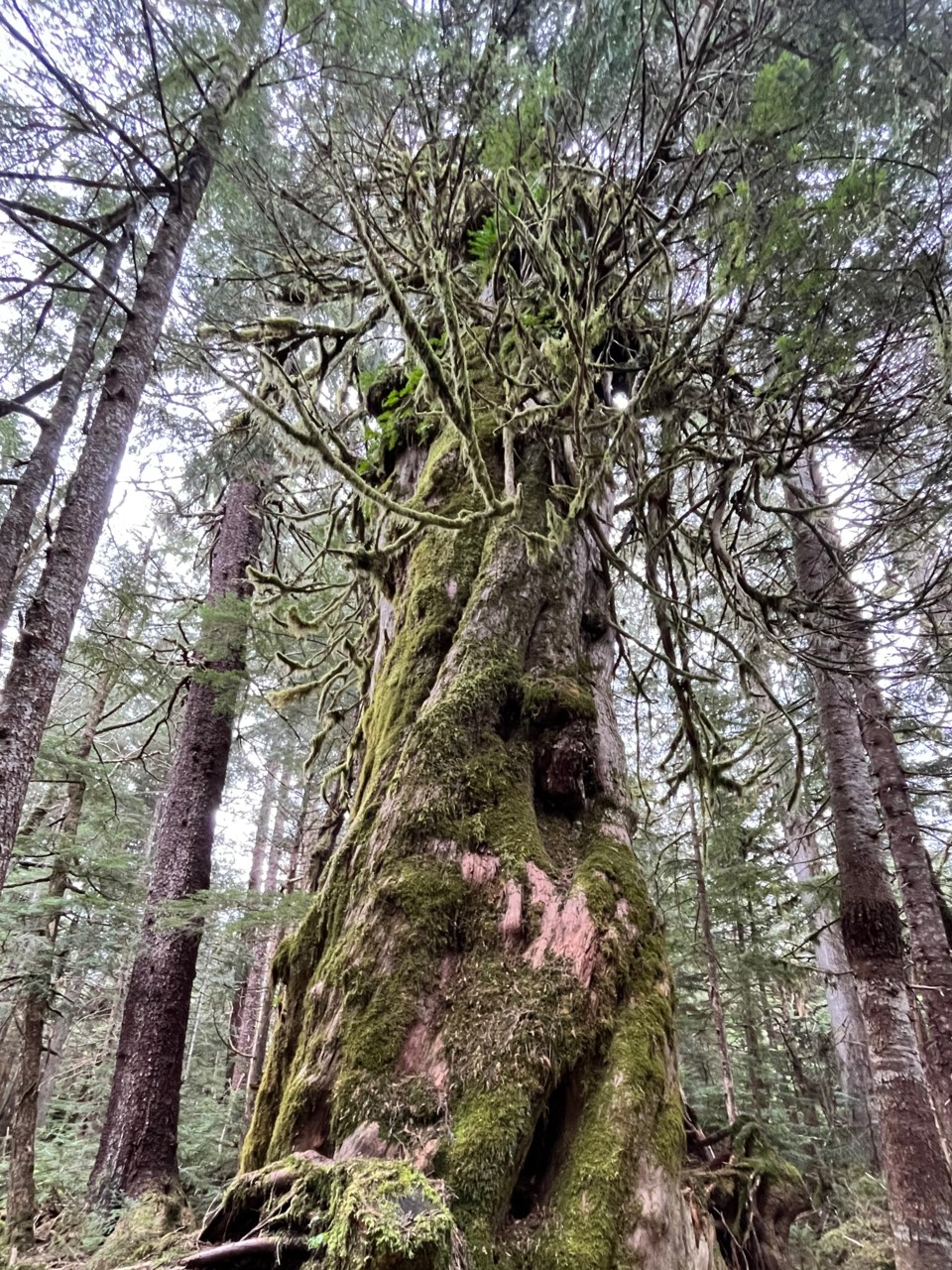The concept of forest bathing, forest therapy, or Shinrin-uoki in Japanese, made its way to North America more than 40 years ago and can be defined as making contact with and taking in the atmosphere of the forest.
Since then there have been several studies conducted to investigate the effects of forest environments on human health and the results are, not surprisingly, positive. As a part of Vancouver Island University’s Lifelong Learning courses at tiwšɛmawtxʷ campus, occupational therapist and certified forest therapy guide Emily Gambling is inviting folks to join her for a walk in the qathet region, on either March 11 and April 15.
"A guided forest therapy walk is not intended for exercise and actually is focused on slowing down, opening the senses and practicing mindful presence," said Gambling. "My role is not to create or prescribe an experience for people, but rather to open the doors for people to experience openness, connection, expansion and discovery."
Gambling said that although hiking and walks out in nature are essential for human health, forest therapy is focused more on being with nature as opposed to socializing or getting physical activity.
According to the Association of Nature and Forest Therapy (ANFT): "The essence of forest bathing is sensory immersion in the ambience of the forest. You walk slowly and notice things. You feel the touch of the breeze on your skin; you notice the sounds of the brook and the birds and the movement of trees in the wind."
In other words, forest therapy is a type of mindfulness practice. Instead of getting lost in thought, distracted by thoughts and travelling to a destination, the person or people are focused on the here and now. The science behind forest therapy has been documented in studies and according to ANFT: "Scientists have found that just looking at forest scenery for 20 minutes can lower the amount of cortisol in your saliva by 13.4 per cent compared to being in an urban area."
Studies also found that those on a relaxed forest walk had cortisol levels go down, along with the heart rate, blood pressure and the body's fight or flight system.
"On the walk there will be a series of invitations followed by sharing together," said Gambling. "It is slow and mindful, and I do my best to facilitate as safe an experience as possible both physically and psychologically."
Gambling added that there will be opportunities for reflection and exploration by oneself and there may be invitations where the group comes together and shares curiosity, and discovery of what they are noticing.
"Expect to open your senses and your imagination, and I encourage people not to come with an agenda and just be open to what presents for you during the experience," said Gambling. "I also like to note that it is not exercise and it is not an ecology lesson."
Gambling said she had been practicing for many years in her personal life and decided to get training to be a guide in order to complement her clinical practice, which she said is quite focused on mental health and wellness.
"I am passionate about caring for our environment so it is a beautiful bridge to facilitate others to connect to nature in a new way," said Gambling.
To find out more about the guided forest therapy walks at VIU, go to pr.viu.ca.
Join the Peak’s email list for the top headlines right in your inbox Monday to Friday.




